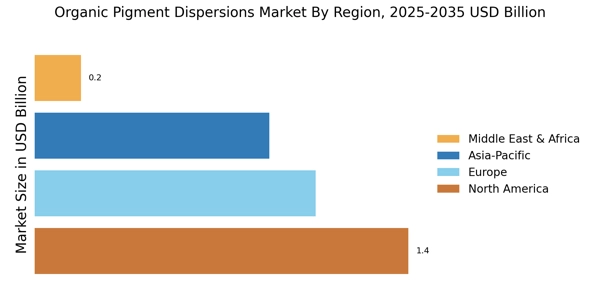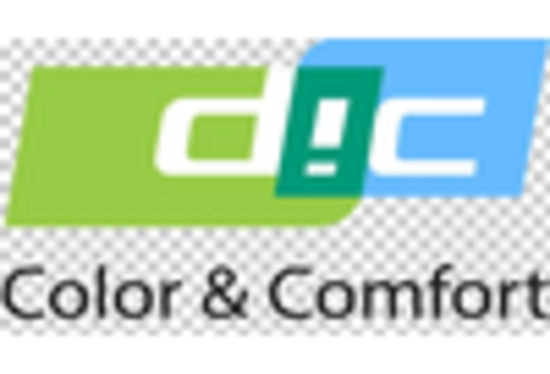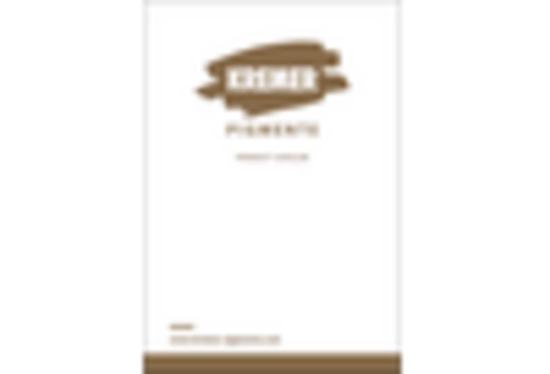Regulatory Compliance
Regulatory compliance is becoming increasingly stringent, influencing the Organic Pigment Dispersions Market. Governments and regulatory bodies are implementing stricter guidelines regarding the use of hazardous substances in pigments. This trend is pushing manufacturers to develop organic alternatives that meet safety and environmental standards. Compliance with these regulations not only ensures market access but also enhances brand reputation among environmentally conscious consumers. As a result, companies that prioritize regulatory compliance are likely to experience growth in their market share. The ongoing evolution of regulations may lead to a shift in production practices, further driving the demand for organic pigment dispersions. This regulatory landscape suggests a potential market growth rate of around 4% as companies adapt to these changes.
Technological Innovations
Technological advancements play a pivotal role in shaping the Organic Pigment Dispersions Market. Innovations in production techniques, such as nanotechnology and advanced dispersion methods, enhance the performance and stability of organic pigments. These technologies enable manufacturers to create products with superior color strength and consistency, which are essential for various applications, including coatings, plastics, and textiles. The market is witnessing a shift towards high-performance organic pigments that meet stringent quality standards. As a result, the market is expected to experience a notable increase in demand, with projections indicating a growth rate of around 6% annually. Companies investing in research and development to harness these technologies are likely to capture a larger market share.
Sustainability Initiatives
The increasing emphasis on sustainability within the Organic Pigment Dispersions Market is driving demand for eco-friendly products. Manufacturers are increasingly adopting sustainable practices, such as using renewable resources and minimizing waste. This shift is not merely a trend but a response to consumer preferences for environmentally responsible products. As a result, the market for organic pigment dispersions is projected to grow at a compound annual growth rate of approximately 5% over the next few years. Companies that prioritize sustainability are likely to gain a competitive edge, as consumers are more inclined to choose products that align with their values. Furthermore, regulatory frameworks are evolving to support sustainable practices, which may further bolster the market for organic pigment dispersions.
Diverse Application Spectrum
The versatility of organic pigment dispersions is a key driver in the Organic Pigment Dispersions Market. These pigments find applications across a wide range of sectors, including paints, coatings, plastics, and cosmetics. The growing demand for high-quality, vibrant colors in these industries is propelling the market forward. For instance, the paint and coatings sector is projected to account for a significant share of the market, driven by the construction and automotive industries. Additionally, the increasing use of organic pigments in personal care products is expanding the market's reach. This diverse application spectrum suggests that the organic pigment dispersions market could witness a robust growth trajectory, with estimates indicating a potential increase in market size by approximately 7% over the next few years.
Consumer Awareness and Preferences
Consumer awareness regarding the benefits of organic products is significantly influencing the Organic Pigment Dispersions Market. As consumers become more informed about the environmental and health impacts of synthetic pigments, there is a noticeable shift towards organic alternatives. This heightened awareness is driving demand for products that are perceived as safer and more sustainable. Market Research Future indicates that consumers are willing to pay a premium for organic pigments, which could lead to increased profitability for manufacturers. Additionally, the rise of eco-conscious brands is further propelling the market, as these brands often prioritize organic ingredients in their formulations. This trend suggests that the organic pigment dispersions market may experience a growth rate of approximately 5% in the coming years, as consumer preferences continue to evolve.


















Leave a Comment